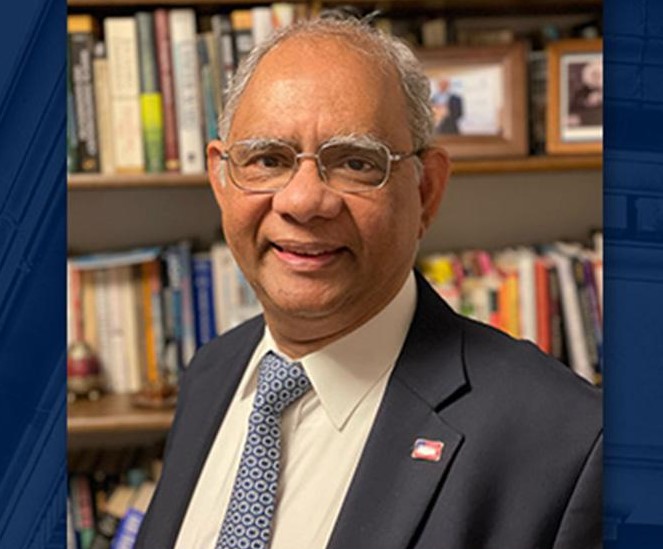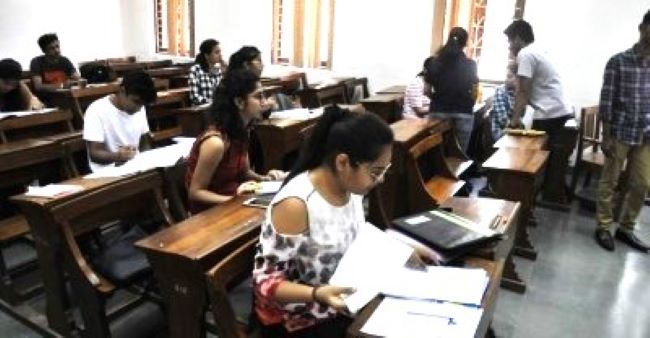BY VEENA RAO*
In a groundbreaking move, the United States State Department has partnered with the Indian Higher Educational Institution to launch an initiative that will enable Indian students to pursue a Professional Master’s degree program at a US university with a specialization in high-tech industries.
Known as the Collaborative Student Mobility Program for Professional STEM Education, the program is aimed at equipping STEM (Science, Technology, Engineering, and Mathematics) students with the necessary expertise to excel in high-tech industries that demand specialized skills such as semiconductor processing, photonics technology, 5G-6G communication systems, and more.
The program is designed by Dr. Akhilesh Lakhtakia, a Jefferson Science Fellow at the State Department’s South and Central Asia (SCA) Bureau, and a professor of engineering science and mechanics at Penn State University.

“The program targets STEM students who have successfully completed their third year of a four-year Bachelor’s degree at an Indian Higher Educational Institution,” Dr. Lakhtakia told NRI Pulse. “These students are offered an exciting opportunity: a 12-month Professional Master’s degree program at a US Higher Educational Institution. This intensive program is designed to prepare them for promising careers in the dynamic landscape of high-tech industries.”
To qualify for the program, a student must have maintained a Grade Point Average (GPA) of over 3.0 on a 4-point scale before entering their fourth year at the Indian institution. This academic achievement reflects their commitment and aptitude for the rigorous coursework that awaits them.
Once selected for the program, the student is required to take at least two elective courses during their fourth year at the Indian institution. These courses are conducted in traditional on-campus classroom and laboratory settings and are specifically designed to maintain the student’s standing in the program. Collaboration between faculty members from both institutions enhances the quality of these courses.
Upon completing their Bachelor’s degree, the student embarks on a journey to the US institution. The 12-month Professional Master’s degree program involves a combination of lectures, hands-on laboratory experiences, and projects directly relevant to the demands of high-tech industries. Successfully completing all program requirements results in the student being awarded the Professional Master’s degree.
Graduates of the Professional Master’s program have the option to apply for an Optional Practical Training extension, which can span up to 36 months. During this period, students can gain valuable real-world experience by working in US industrial facilities. Notably, participants are eligible for competitive financial remuneration from their employers.
The Indian Higher Educational Institution awards the Bachelor’s degree upon successful completion of the fourth year. Subsequently, the US Higher Educational Institution grants the Professional Master’s degree upon completing the 12-month program.
Financial responsibilities include paying tuition and other fees to the respective institutions: the Indian institution during the fourth year and the US institution during the Professional Master’s program. Additionally, students are responsible for covering living expenses, medical costs, and transportation between campuses.
The collaboration between these two educational powerhouses brings about numerous benefits. For the Indian institution, selected students are guaranteed admission to the Professional Master’s program, contingent on their performance in the fourth year. Furthermore, faculty members from both institutions collaborate on the development of courses that bridge the gap between the two academic phases, fostering joint research and opportunities for intellectual exchange.
Similarly, the US institution benefits from a steady annual cohort of students entering the Professional Master’s program. The joint collaboration in course development enhances the educational offerings, attracting not only students from the collaborative Bachelor’s program but also other potential learners seeking advanced expertise.
In essence, the Collaborative Student Mobility Program for Professional STEM Education stands as a testament to the potential of international cooperation in fostering talent and innovation. As STEM students cross borders to gain educational experiences, they are armed with the skills and knowledge to revolutionize the high-tech industries of today and tomorrow.
*The author is the founding editor of NRI Pulse.





